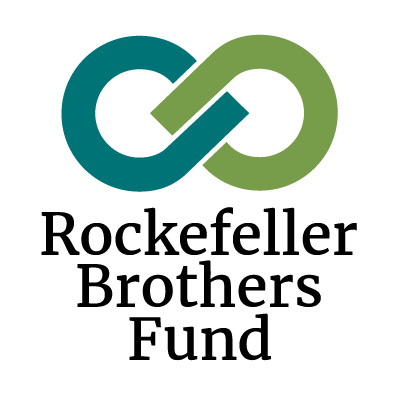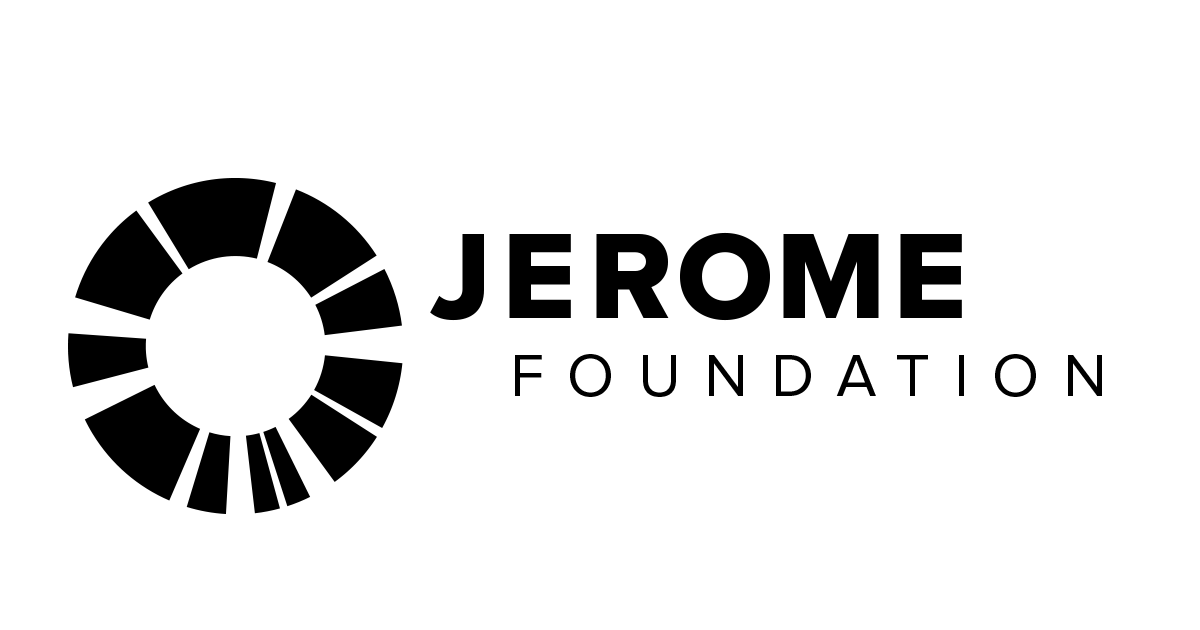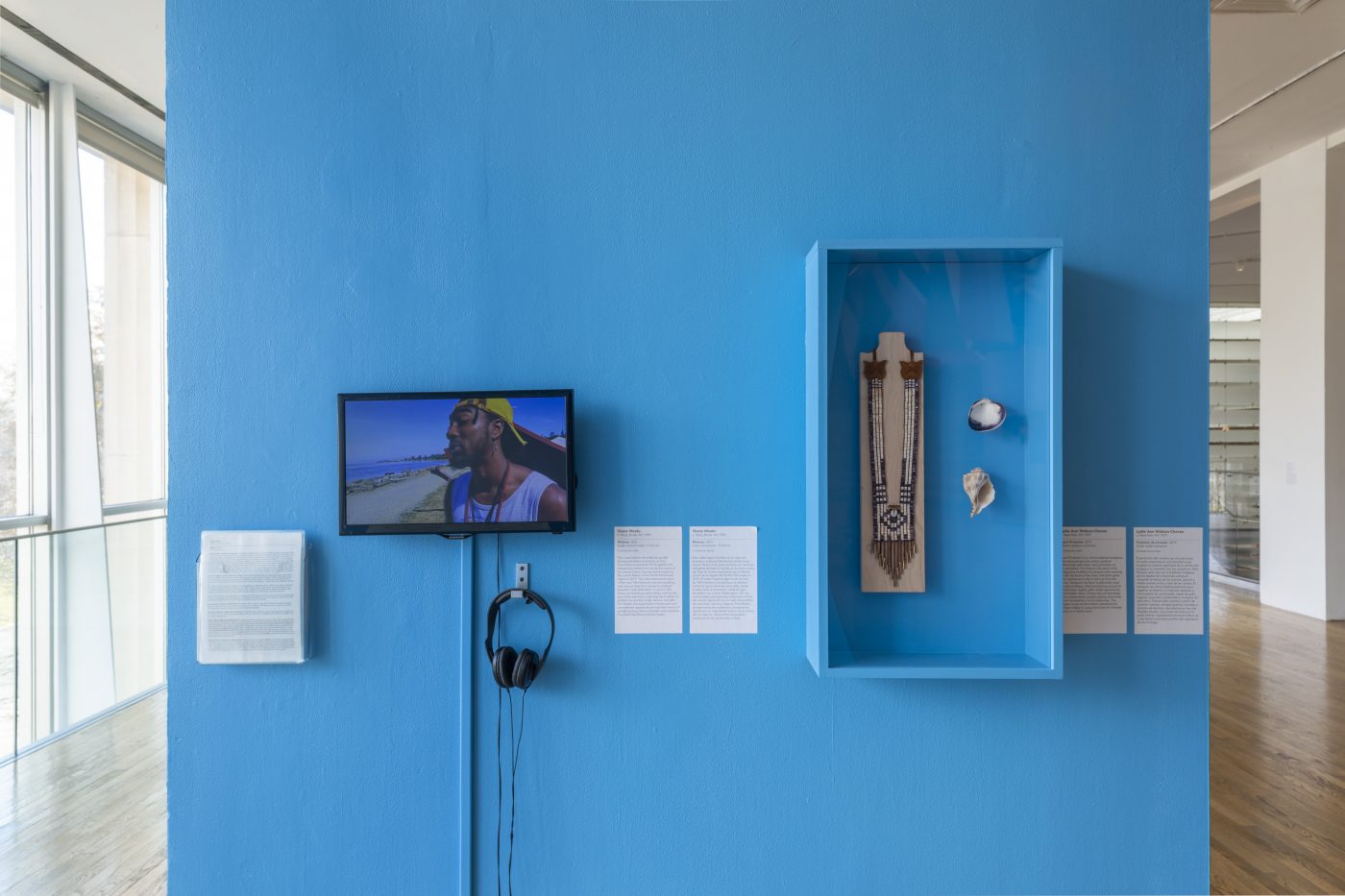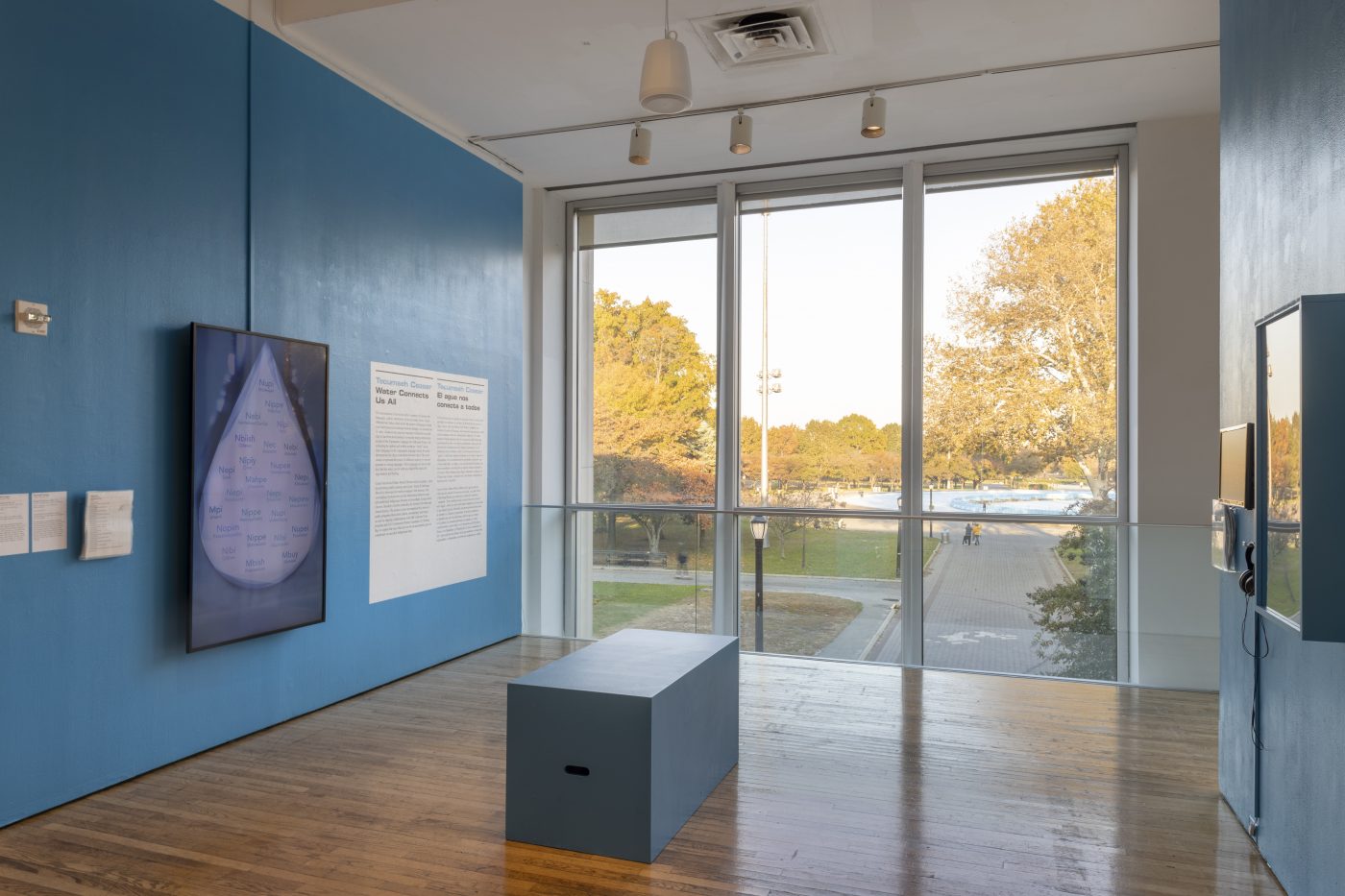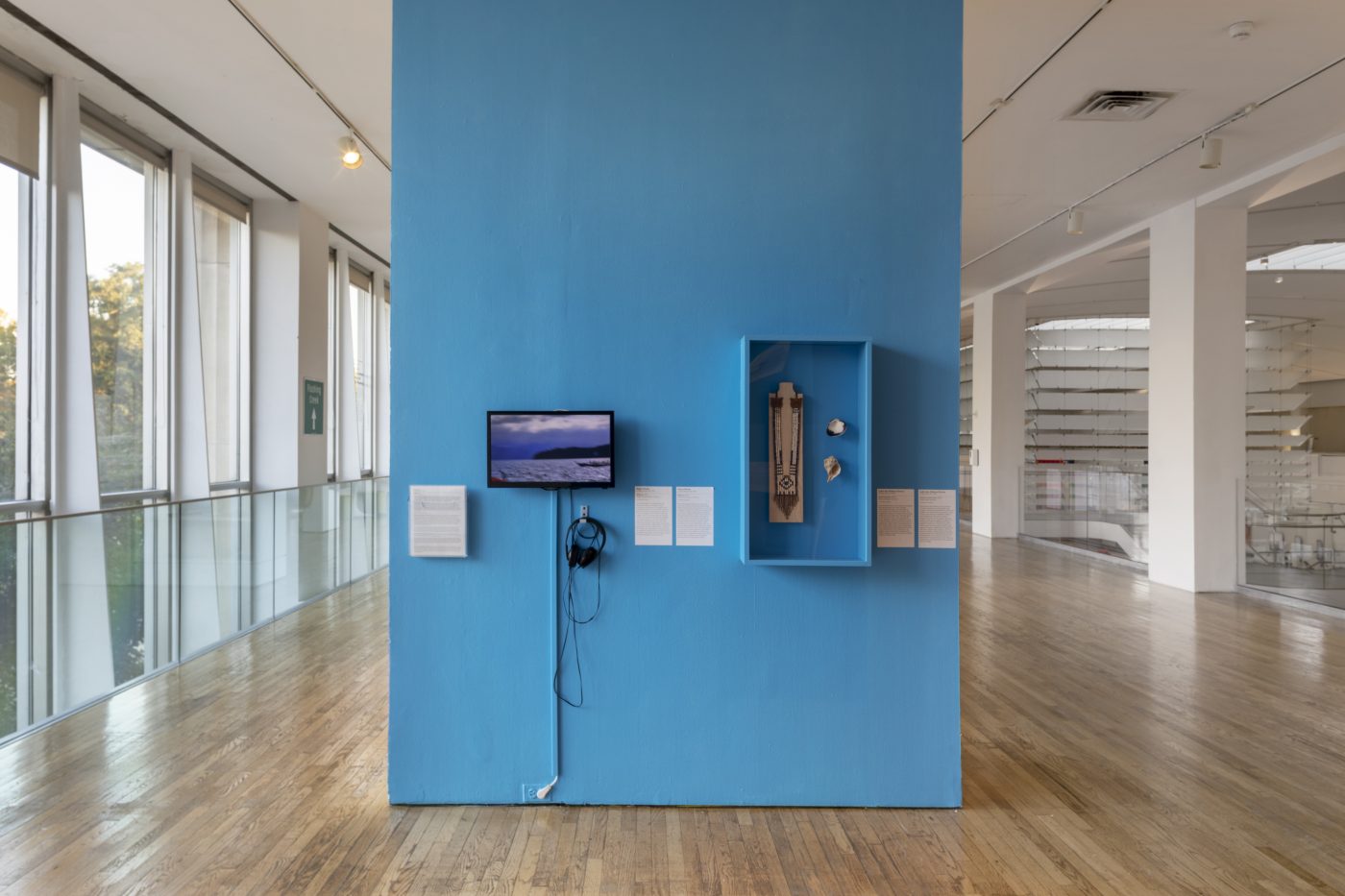Exhibitions - Water Connects Us All
Tecumseh Ceaser
Water Connects Us All
10.02.21 – 03.06.22
Year of Uncertainty (YoU)
Image: Installation view, "Tecumseh Ceaser: Water Connects Us All", Queens Museum, featuring works by Tecumseh Ceaser, Lydia Ann Wallace-Chavez, and Shane Weeks. Photo credit: Hai Zhang.
Year of Uncertainty Artist-In-Residence Tecumseh Ceaser’s project, Water Connects Us All, is tied to the artist’s journey of learning the languages, culture, and history of his ancestors. Here, Ceaser (Matinecock Turkey clan) shares the power of language to hold vital interconnected teachings between Indigenous communities. A video visualizes the ongoing language reclamation research that he has been participating in with many communities as part of the Algonquian Language Revitalization Project. By animating the spoken and written words for “water” across sister languages in the Algonquian language family, the artist demonstrates the deep connections between them. The work stands to represent the power of collective memory to recover dormant or resting languages. These languages are never truly lost but, like water, can be seen as a shared life source for regeneration and healing.
Ceaser invited Shane Weeks (Shinnecock) to include Mishoon (2021) a video documenting a collective paddle journey and Lydia Ann Wallace-Chavez (Unkechaug/Blood) to showcase her woven wampum necklace, Heart Protector (2019). This comingling of perspectives on the relationship between water and traditional Indigenous lifeways in Sewanhaky (Long Island, Queens, Brooklyn) further embodies the notions of kinship and shared history. The project is also accompanied by a series of public programs that center culture, stewardship, and legacy, as well as ongoing collaborations with QM’s Queens Teens program and YoU Community Partner Guardians of Flushing Bay to explore the ways that one can be an accountable guest or cohabitator on unceded Indigenous land.
Tecumseh Ceaser is an Indigenous artist and cultural consultant. He is of Matinecock Turkey clan, Montaukett, and Unkechaug descent. Born and raised in Queens, NY, the homeland of the Matinecock, he works in the traditional medium and practice of Wampum (quahog shell) carving. He frequently collaborates with organizations to bring cultural programming to local tribes and their communities. He currently serves as an advisor for the Global Indigenous Youth Caucus at the United Nations, where he advocates for Indigenous Americans’ rights to member states, NGOs, and other indigenous nations. He is also the Educational Program Coordinator for Niamuck Land Trust, an organization dedicated to protecting and preserving culturally significant sites. He is currently in residence at Flushing Town Hall. Ceaser is based in New York City.
Lydia Ann Wallace-Chavez is from Long Island, NY and is currently based in Denver, Colorado. Her prime focus is on handmade Wampum jewelry, made from Quahog clam shell, while her other works include painting, beading, lapidary work, and traditional Native American craft. Chavez creates contemporary pieces using Wampum, a material with a history revered by Indigenous groups, non-Native shell artists, historians, and the like. The inspiration for these pieces have always been to represent Wampum in a respectful manner while showcasing the natural, inherent beauty of the shell but also focusing on the growth and development of the modern Native culture. Lydia acquired an AFA at the Institute of American Indian Art in Santa Fe, NM (2000) and achieved a BA at Alfred University in Alfred, NY (2002). She has lectured at the Metropolitan Museum of Art in NYC and has works in several museums including the Smithsonian National Museum of the American Indian (NMAI), the NYS museum in Albany, the USFW Long Island Wertheim Center, and a private collection of several belts commissioned by the Seneca Nation. She also has made custom wampum belts for private collectors, one of which was sent to be held on the frontlines during the Standing Rock Dakota Access Pipeline protests.
Shane Weeks is a member of the Shinnecock Nation of Southampton, New York. Shane’s traditional name is “Bizhiki Nibauit”, which means Standing Buffalo. He is also from the Buffalo Clan. Shane is dedicated to his community and represents his people in a number of capacities. As a traditional singer and dancer, cultural consultant, artist and a member of several boards and committees, Shane’s mission is to bridge the gap between his community of Shinnecock, the local community, and communities abroad. As a multi-disciplinary artist, Shane has been able to express his culture and knowledge to communities world-wide. He has worked with materials such as leather, wood, stone, bone and other natural materials. He is a master wampum maker, creating beads and other objects from the quahog clam shells. Shane also works in the mediums of social practice, traditional dance, traditional music, film, and photography.
Tecumseh Ceaser’s work is also featured in the group exhibition Wet Networks, installed alongside the Queens Museum’s long-term exhibition of The Relief Map of New York City’s Water Supply System. Wet Networks presents artifacts and commissioned projects from Shu Lea Cheang’s inaugural “Geek Camp” at experimental farm and cultural center, CycleX, featuring Ceaser, Nabil Hassein, Melanie Hoff, Christopher Lin, Jan Mun, and TJ Shin with Erwin Karl and Evan T. Pritchard. Together their reflections and offerings illuminate the relationships between new technologies and traditional ways of knowing, the challenges of collective care, and how land and water shape and are shaped by one another and us.
Check out Ceaser’s collaborations with artists Jan Mun and Christopher Lin in the Queens Museum’s Watershed Gallery!
Discover Images of the Exhibition
Supporters
The Year of Uncertainty artist residencies and community partnerships are made possible by generous support from the Andrew W. Mellon Foundation, Rockefeller Brothers Fund, the Lambent Foundation, and the Jerome Foundation.
Major funding for the Queens Museum is generously provided by the New York City Department of Cultural Affairs, the New York State Council on the Arts with the support of Governor Kathy Hochul and the New York State Legislature.
